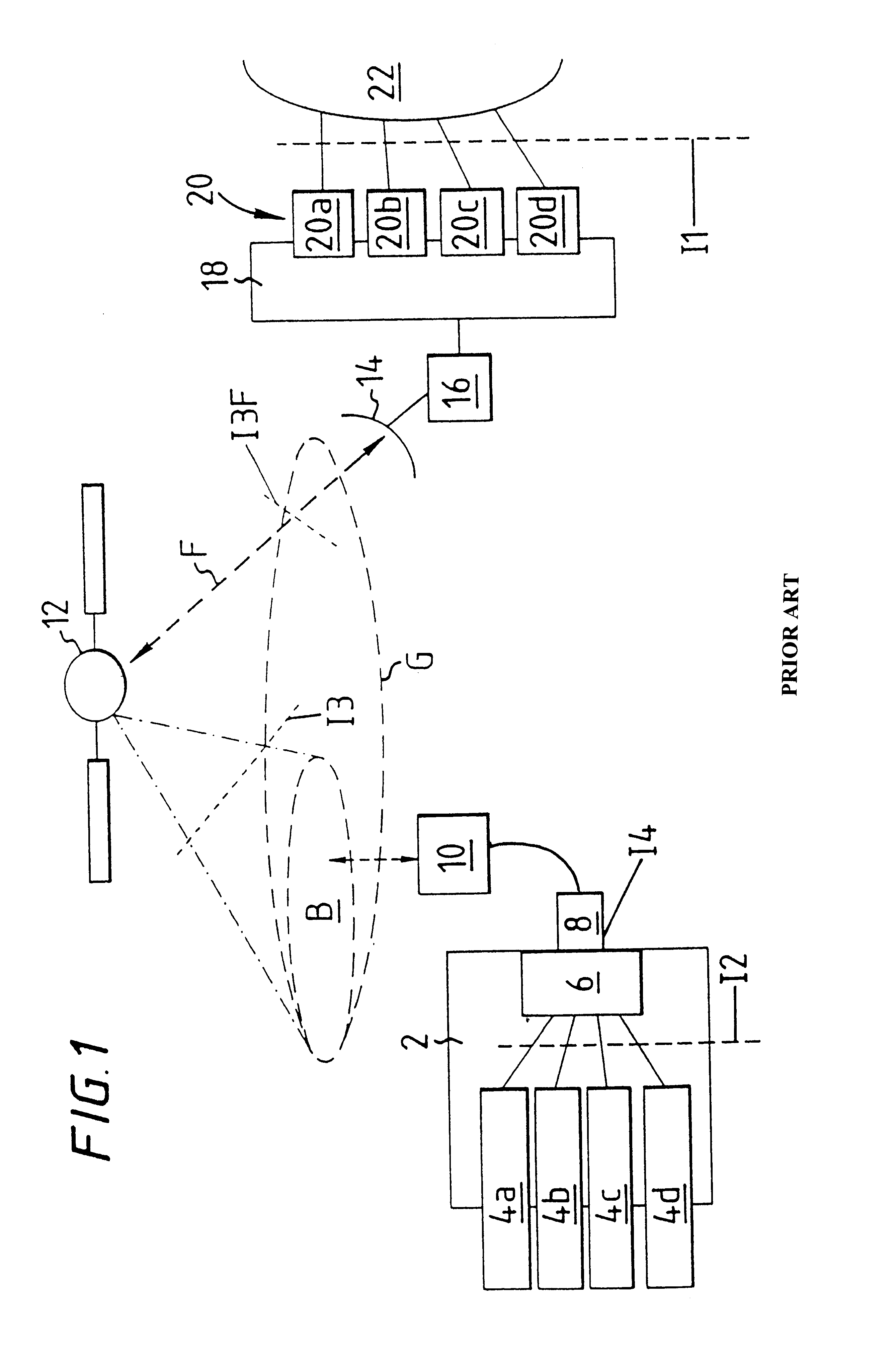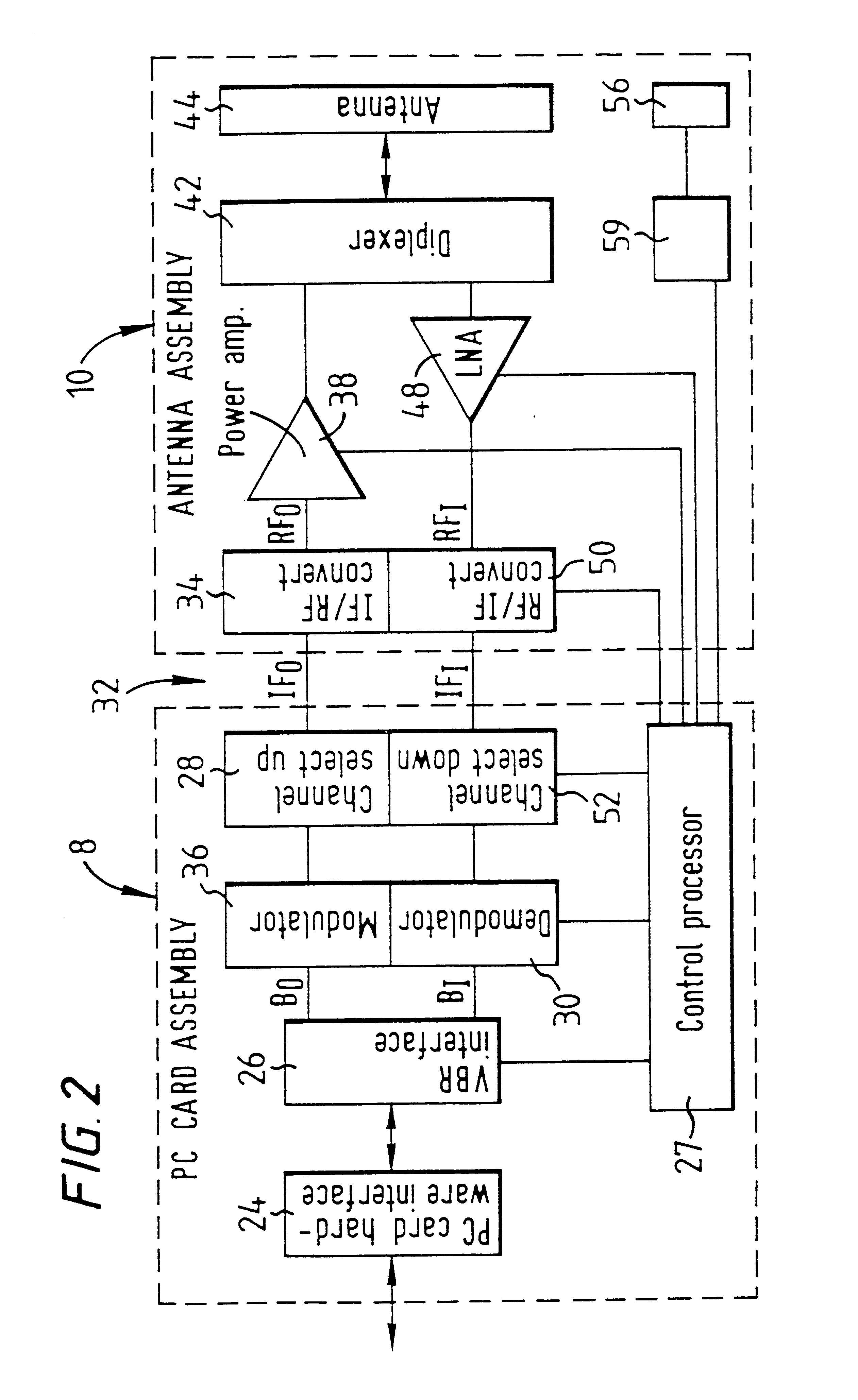Satellite apparatus with omnidirectional and manually steerable directional antenna
a satellite apparatus and directional antenna technology, applied in the field of portable satellite communications antennas, can solve the problems of inconvenient personal mobile communication, the inability to miniaturize the equipment required for satellite tracking, etc., and achieve the effect of facilitating the setup of satellite communications antennas
- Summary
- Abstract
- Description
- Claims
- Application Information
AI Technical Summary
Benefits of technology
Problems solved by technology
Method used
Image
Examples
Embodiment Construction
System Overview
FIG. 1 shows a satellite communication system as described in UK patent application no. GB9625475.0, the contents of which are incorporated herein by reference.
FIG. 1 shows schematically a mobile terminal connected via a satellite 12 to a network management centre 18, which allocates bandwidth to the mobile terminal and connects the mobile terminal to a terrestrial network 22. In this embodiment, the mobile terminal 2 comprises a portable computer on which a number of different communications applications 4a, 4b, 4c, 4d may be run. For example, the applications may be a voice telephony application, an internet-based application, a facsimile application and an ATM network-based application. Each of these applications use standard application programming interfaces (API) such as Winsock for internet access, TAPI for telephony applications and CAPI for ISDN applications. The interfaces to such applications are shown schematically by the reference I2 in FIG. 1. Driver sof...
PUM
 Login to View More
Login to View More Abstract
Description
Claims
Application Information
 Login to View More
Login to View More - R&D
- Intellectual Property
- Life Sciences
- Materials
- Tech Scout
- Unparalleled Data Quality
- Higher Quality Content
- 60% Fewer Hallucinations
Browse by: Latest US Patents, China's latest patents, Technical Efficacy Thesaurus, Application Domain, Technology Topic, Popular Technical Reports.
© 2025 PatSnap. All rights reserved.Legal|Privacy policy|Modern Slavery Act Transparency Statement|Sitemap|About US| Contact US: help@patsnap.com



